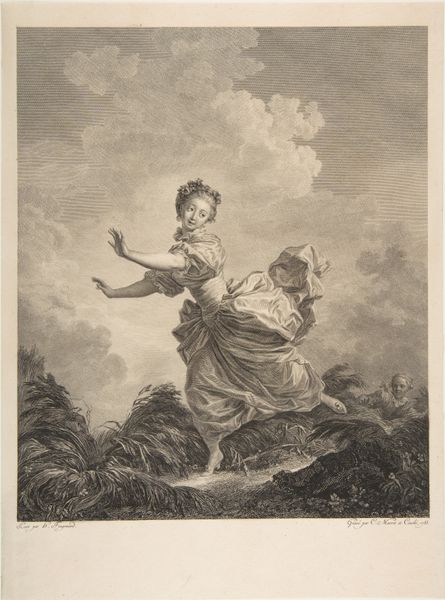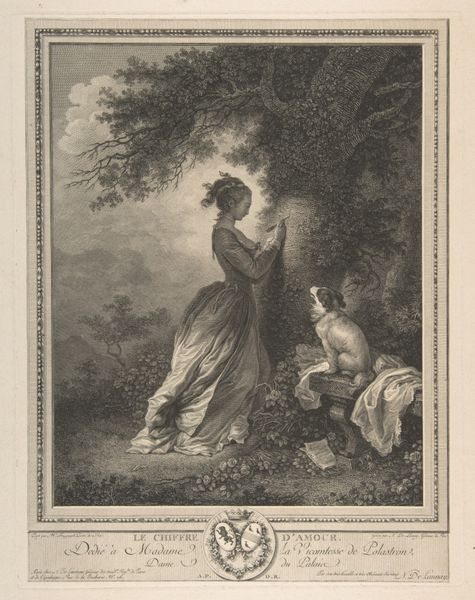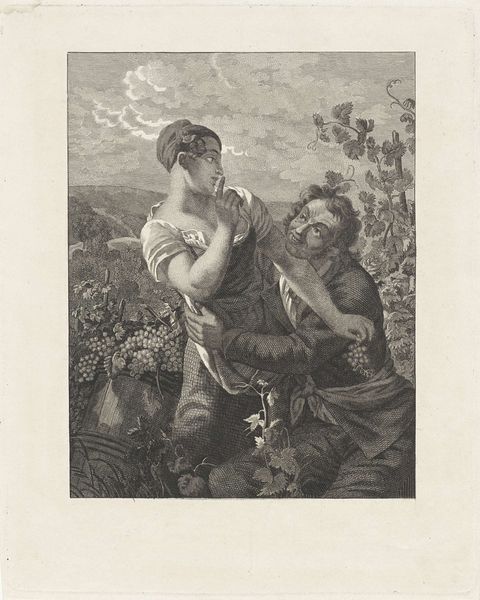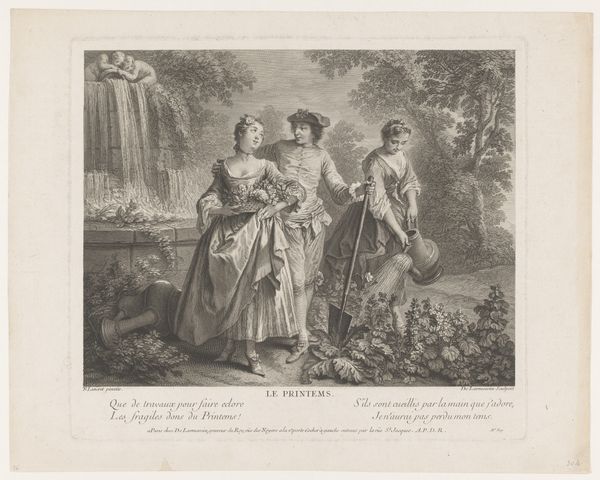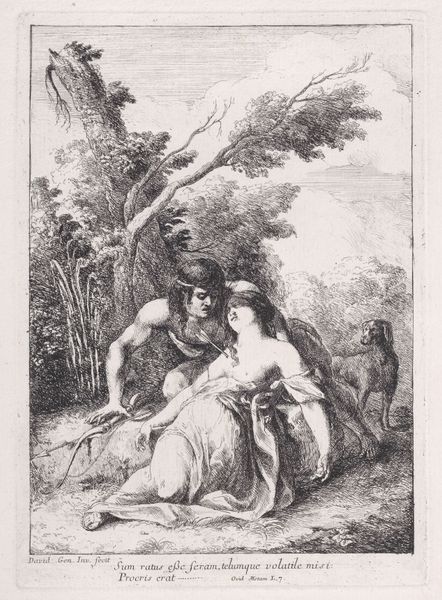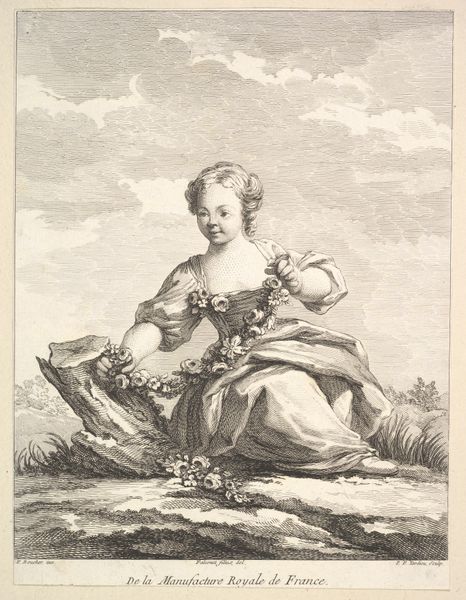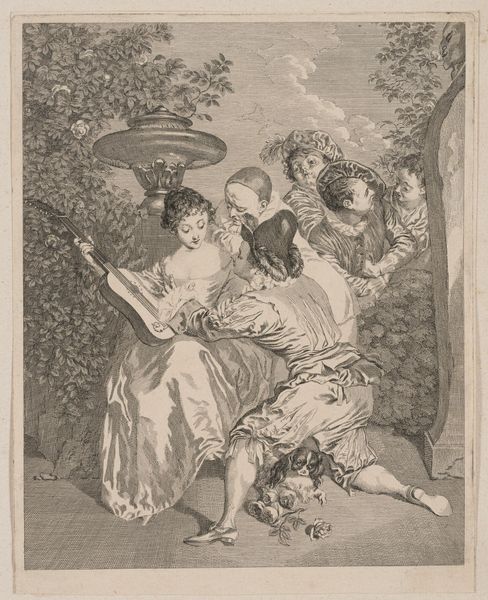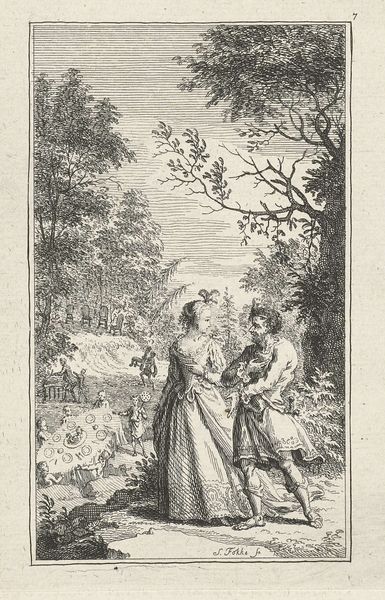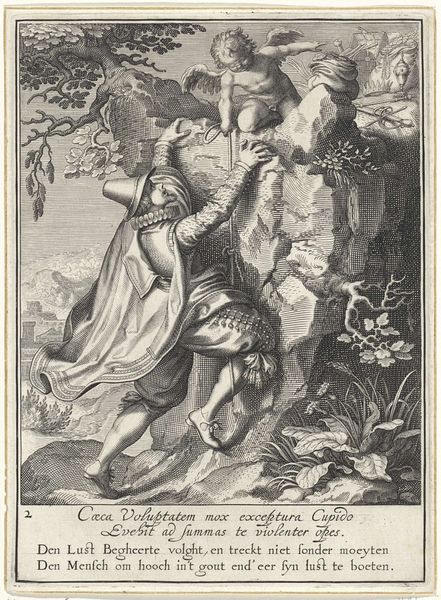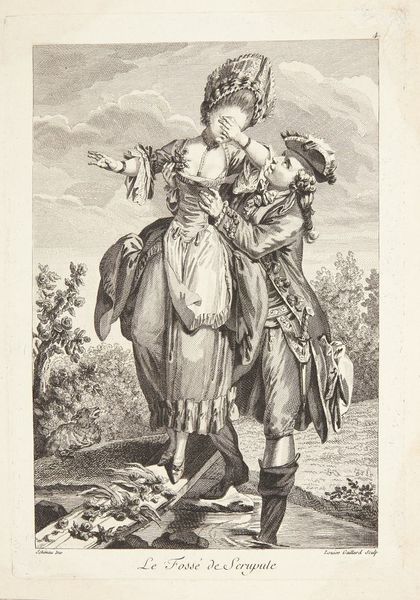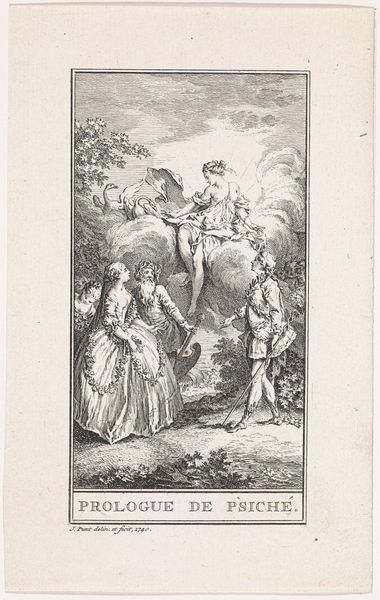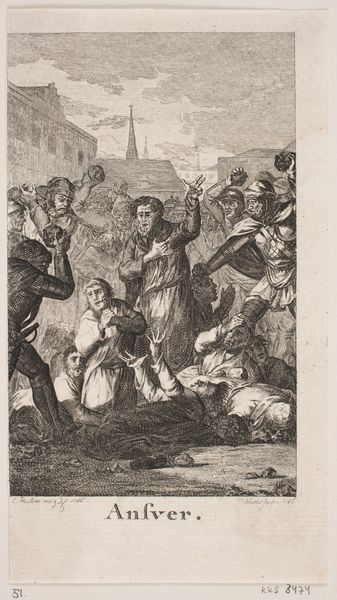
Dimensions: 293 × 245 mm (image); 370 × 275 mm (plate); 586 × 453 mm (sheet)
Copyright: Public Domain
Jacques Couché made this print, Little Theresa, using etching and engraving techniques sometime around the late 18th century in France. Prints like these played a vital role in circulating images and ideas, especially among the educated elite. This image operates within the visual language of Rococo art which was often playful, light-hearted, and focused on themes of love and leisure. It catered to the aristocratic tastes of the time. The setting in a vineyard, the elegant clothing, and the coy interaction between the figures all speak to a culture of courtly love and dalliance. But such images also served a social function, reinforcing class distinctions and promoting certain ideals of beauty and behavior. To truly understand this print, we might delve into the history of French printmaking, the patronage systems that supported artists like Couché, and the social codes that governed courtship and relationships in 18th-century France. This requires research into period documents, fashion, and social commentary. Art history helps us see art as part of a larger cultural conversation.
Comments
No comments
Be the first to comment and join the conversation on the ultimate creative platform.
